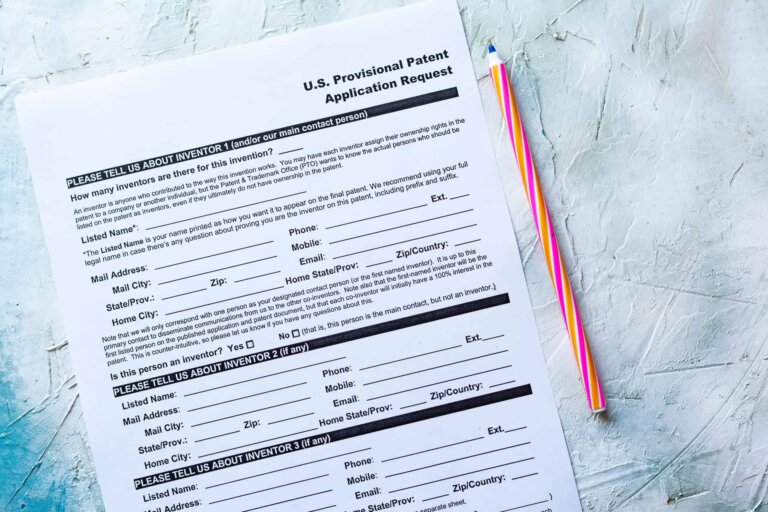If you want to start the patent process but need more time to refine your application, a provisional patent is an excellent option that grants you an earlier filing date. It establishes the footsteps that your subsequent non-provisional patent application will follow.
Unfortunately, there are strict deadlines associated with provisional patent applications. Inventors may find that time runs out before they’ve managed to finalize the details of their patent-eligible intellectual property.
So, what happens when you need a provisional patent extension? The following article will explore the restrictions of a provisional patent and your options should you need a provisional patent extension.
What is a provisional patent application?
A provisional patent application grants an inventor the right to use the term “patent pending” with no formal patent claims or an information disclosure statement. As mentioned above, a provisional patent application is meant to serve as a placeholder for a non-provisional patent application. They are less costly and time-consuming to file than non-provisional patent applications, making them an excellent choice for inventors who still need to determine the invention’s market value.
The catch is that provisional patent applications are only valid for 12 months. Then, they’ll need to be supported by a corresponding non-provisional patent application or converted.
| More information about how to convert your provisional patent application or file your corresponding non-provisional patent application can be found in our previous blog post, “Patents: Provisional vs. Non-Provisional Applications—Which is Right for You?” |
What is a non-provisional patent?
Unlike provisional patents, non-provisional patent applications will be examined by the USPTO. They can be issued into enforceable US patent claims because they’re accompanied by an information disclosure statement (following a prior art search), an oath to comply, a costlier filing fee, and a detailed description of the invention.
Since a patent examiner will be investigating each of the aforementioned items, they must be as thoroughly documented as possible. The complete list of non-provisional patent application requirements can be found on the USPTO’s website.
Is it possible to obtain a provisional patent extension?
There are no legal means of obtaining a provisional patent extension. These types of applications will be abandoned automatically 12 months after the filing date. The US operates under a first-to-file system per the America Invents Act. This 2013 reform states that the inventor who files their patent application first is awarded patent rights, regardless of the date of invention. Accordingly, inventors should try to do everything they can to keep the initial filing date of their provisional patent applications.
Are there any alternatives to a provisional patent extension?
You cannot obtain a provisional patent extension, nor can you “renew” an existing provisional patent application by refiling. You can, however, file a new provisional patent application entirely. If you file a new provisional patent application, your original provisional patent application will still be abandoned.
Since your first provisional patent application may still have outstanding rights, it needs to be abandoned before the filing of a subsequent provisional patent application.
What are the consequences of filing for a new provisional patent application?
A new provisional patent application will give you a new priority date. This could jeopardize your claims for a couple of reasons:
- Additional prior art. Having a later priority date provides ample opportunity for prior art to be uncovered in a patent search and used against you.
- Public disclosure issues. If you’ve publicly disclosed information about your invention, your initial provisional patent application filing date could be critical.
Depending on the type of invention you have and the patent protection you seek, you could have other provisional patent extension options. Contact the Bold Patents IP experts or schedule a free 20-minute Discovery Call to learn more.

